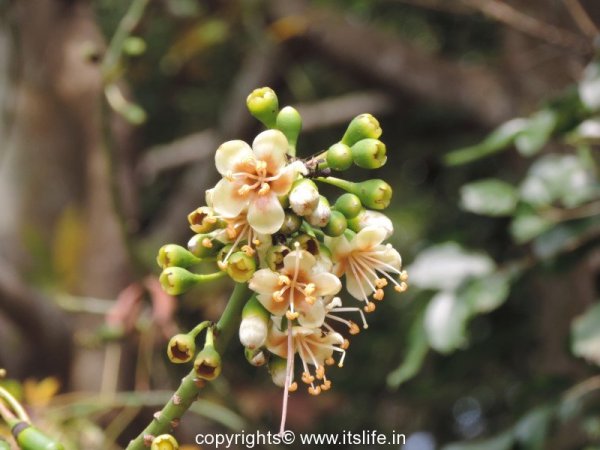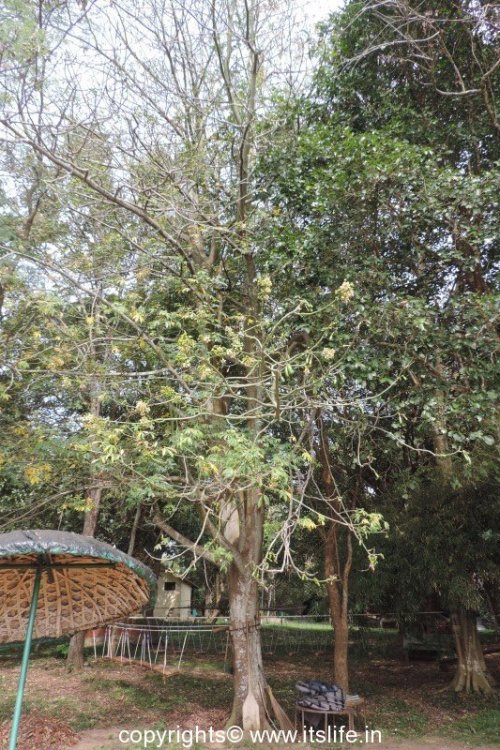In Bangalore there are many Silk Cotton Trees. It is interesting to observe the change the trees go through in different seasons.
Other common names are Kapok, Ceiba, White Silk-Cotton Tree. In Kannada it is known as Dudi Mara, Hindi it is Safed semal, in Malayalam it is Pannimaram, in Tamil it is known as Pancu, in Telugu it is known as Tellaburaga, in Sanskrit it is Kutashalmali, and in Bengali it is known as Shwet Simul.
The botanical name is Ceiba pentandra and belongs to Bombacaceae (baobab) family.
Silk Cotton Trees are found in the wild in the tropical rainforests. These deciduous trees are native of South America but can be found in Africa and South East Asia. They grow well in sandy damp soil.
The tree can grow to a height of 150 feet and I was delighted to find a tall Silk Cotton tree in Kabini Wildlife Sanctuary, Karnataka. The trunk of the tree is smooth and grey with a diameter of 9 feet or more with hard sharp prickles. The branches are opposite to each other and appear like steps. The crown is like an umbrella. The large tree offers a secure place for animals and birds to nest. The holes in the trunks of old trees are used as nests by parakeets.
The leaves are dull green and compound. The 5-9 leaflets are 7-8 cm long, oval, or lance-shaped and 1-3.5 cm wide. They give a lot of shade before winter. The leaves fall during winter and the tree looks magnificent with its outstretched branches sporting flower buds.
From January to March the flowers bloom on the leafless tree. The flowers are usually bright red, pink or yellow or white. The flowers are clustered on small, new branches.
The 5 petals are curved, and the flowers are about 2.5 cm long. The flowers contain numerous long stamens.
The flower sits in a fleshy calyx divided into three sections which feels silky and is green in color. The flower scent is not favorable but attracts many bats. When the tree is in flower it is always covered with birds and insects who love the nectar, especially Drongos, Mynahs, and Sunbirds.
The fruit is a big green pod with seeds that look like brown peas.
They start to ripen in April and turn brown and hard when ripe. They split and soft silky cotton inside is blown away by the wind.
This cotton contains the oval black seeds and is dispersed by wind to form new trees.
Uses:
The cotton from this tree is used to fill cushions and quilts.
The gum secreted from the tree is called as Mocha-ras and is used in native medicines. The gum is also used to bind books. The flowers are edible and used a vegetable and to garnish dishes.



